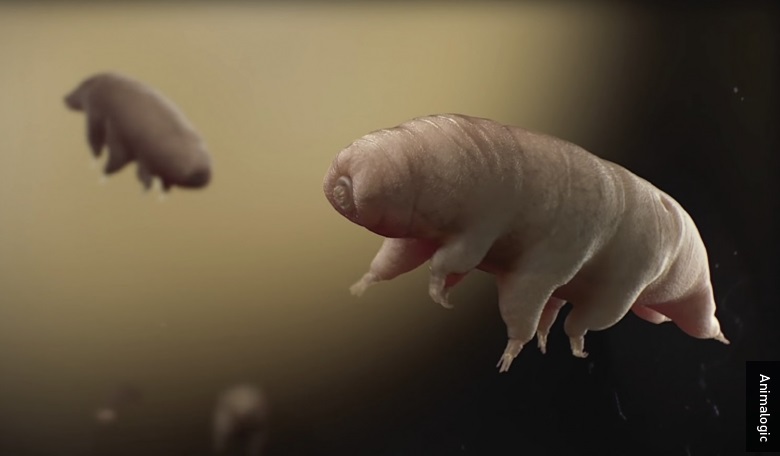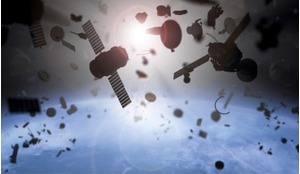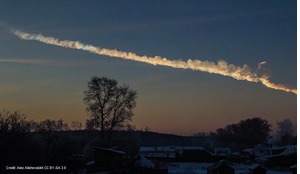The seeding of life from and to other worlds through space was first suggested several centuries ago. Since then, theories of evolutionary chemical biology have been largely accepted to explain the formation of life on Earth. Here, using selected examples, the authors ask why it is that some organisms can tolerate extreme conditions not found on Earth. Could these organisms have contributed as alien life to our rich biological diversity? Could they have applications for humankind and might they perhaps already inhabit other worlds?
The concept that life might be seeded on planets from space became popular in the 1800s. It was further developed by Swedish chemist and Nobel Laureate Svante Arrhenius in his 1903 article, ‘The Distribution of Life in Space’, where he first coined the term “panspermia”, derived from the Greek, meaning “seeds all”.
Arrhenius proposed a mechanism whereby life could move from planet to planet and suggested that organisms such as bacterial spores and viruses ejected from planets by electrical forces are dispersed through space by the weak pressure of starlight. Moreover, the origin of life on a previously lifeless planet could only be by seeding preformed life onto the planet from elsewhere in the Universe.
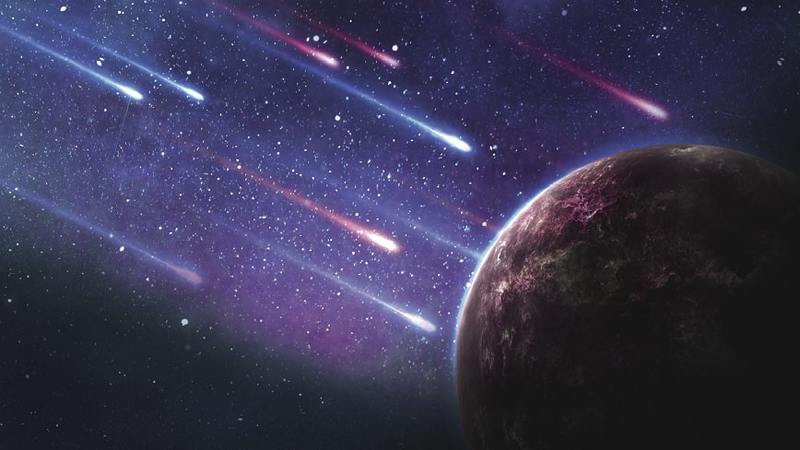 Did panspermia seed life on Earth?
Did panspermia seed life on Earth?
Today it is generally believed that life on Earth resulted as a consequence of evolutionary chemical biology, driven by competing ideas ranging from protein, ribonucleic acid (RNA), metabolism, and lipid-driven origins. Panspermia has taken a ‘back seat’, though the idea of directed panspermia, the deliberate provision of organisms in space to be introduced into lifeless but inhabitable astronomical bodies was revisited in the 1960s and 1970s by Francis Crick (who co-discovered the structure of DNA with James Watson in 1953) and Leslie Orgel.
The estimated liquid water content of the solar system today ranges from 25 to 50 times the water content on Earth. Moreover, it is highly likely that the supernova blast that initially triggered the formation of our solar system provided our protoplanetary disc with vast quantities of unstable isotopes such as aluminium-26
Today, sending a ‘genesis ark’ of extremophiles to distant bodies on board ultra-light nanocrafts powered by ground-based lasers may be a possibility
The heat produced by the radioactive decay supported liquid water pools in a large number of comets in the solar system for the first several hundred million years and, as noted by Prof Chandra Wickramasinghe, “... a large fraction of the 100 billion comets in our solar system did indeed have liquid interiors in the past”. This amount of water could have been enough for primitive life forms to evolve and to later seed the new oceans of the cooled-down Earth, and may explain why the earliest evidence of life (4.1 billion years ago) is so close to the physical formation of the planet (4.5 billion years ago).
Furthermore, spectroscopy of interstellar stardust samples showed very interesting results. The spectrum received was very similar to the spectrum of dehydrated bacteria generated on Earth, which could suggest an abundance of organic material, if not actual organisms floating in the vast void of space.
Indeed today, sending a ‘genesis ark’ of extremophiles to distant bodies on board ultra-light nanocrafts powered by ground-based lasers may be a possibility using Project Starshot, an initiative sponsored by the Breakthrough Foundation to explore interstellar space.
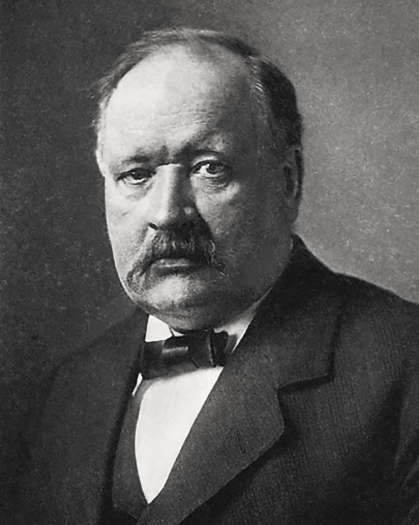 Svante Arrhenius popularised the hypothesis of panspermia, first coining the phrase in his 1903 article, ‘The Distribution of Life in Space’.
Svante Arrhenius popularised the hypothesis of panspermia, first coining the phrase in his 1903 article, ‘The Distribution of Life in Space’.
Life, but not as we know it
For many years scientists have been fascinated by organisms that live in extreme environments and we continue to discover amazing new forms of life which thrive in habitats most organisms could not. These organisms, known as extremophiles, inhabit niche conditions which for other terrestrial life-forms are intolerably hostile and potentially lethal. Extremophiles include members of bacteria, archaea (organisms whose cells lack a defined nucleus), and eukarya (organisms whose cells have a nucleus enclosed within a nuclear envelope), which make up the three domains of life. Most are microorganisms but this group also includes eukaryotes such as algae, fungi, protozoa and multicellular organisms.
Extremophiles can thrive in both hot and cold environments (thermophiles at > 80C and cryophiles at < 15C), as well as in salt solutions (halophiles at > 50 g/L) and acid (acidophile at pH < 3) and alkaline conditions (alkaliphile at pH >9) and also at high pressure (barophile at >50 MPa) and ultra-low water availability. They have been found in hydrothermal vents at 122 C and in frozen sea water, at depths of 6.7 km in the Earth’s crust, at ocean depths greater than 10 km where the pressure is over 110 MPa and in extreme acid
(pH 0) and alkaline conditions (pH 12.8).
Extremophiles inhabit niche conditions which for other terrestrial life-forms are intolerably hostile and potentially lethal
Other extremophiles can grow in the presence of heavy metals such as arsenic, cadmium, copper and zinc or ‘eat’ perchlorate, a contaminant found in certain places on Earth. A number of organisms can tolerate multiple extremes of environment and are known as polyextremophiles. Intriguingly, for every extreme environmental condition investigated on Earth, a variety of organisms have shown that they not only can tolerate these conditions, but that they also often require those conditions for survival. Some properties of tolerance to extreme environments have been discovered by accident. For example, the radio-resistant bacterium Deinococcus radiodurans was discovered as a contaminant in radiation-sterilised corned beef cans in the 1950s!
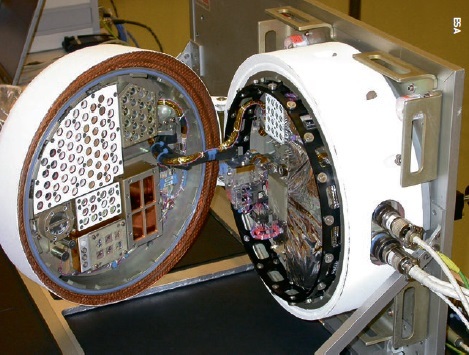 Exposure of samples to space on the outside of the Foton-M3 capsule
Exposure of samples to space on the outside of the Foton-M3 capsule
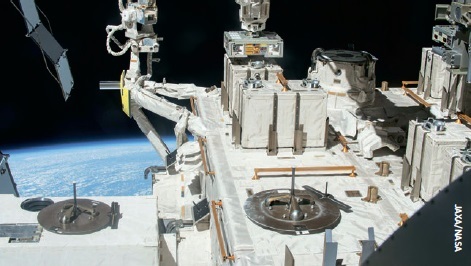 A robotic arm places samples of radioresistant Deinococcus bacteria outside the International Space Station
A robotic arm places samples of radioresistant Deinococcus bacteria outside the International Space Station
Life in space
In 2007, Swedish and German scientists conducted the ‘Tardigrades in space’ (TARDIS) study where 3000 tardigrades – microscopic invertebrates also known as ‘water bears’ or ‘moss piglets’ – were exposed to space for 10 days on the European Space Agency’s Foton-M3 capsule. Remarkably the properties of space vacuum, which include extreme dehydration, did not impair survival of the majority of organisms. More recently in 2020, scientists reported that bacteria sent from Earth, particularly Deinococcus radiodurans were found to survive for three years in space, based on studies conducted on the International Space Station (ISS). These findings support the notion of panspermia, the hypothesis that life exists throughout the Universe, distributed in various ways, including space dust, meteoroids, asteroids, comets, planetoids or contaminated spacecraft.
What is the biology supporting the ability of tardigrades to withstand such extreme environments? Working with a species called Ramazzottius varieornatus in 2016, a Japanese group of scientists led by Takekazu Kunieda discovered that a protective protein, which they called ‘damage suppressor’ or Dsup, may provide resistance to the damaging effects of X-radiation. The team found that Dsup was able to protect the tardigrade double stranded DNA from radiation-induced breaks under stresses of both radiation and desiccation. In 2019, an American team found evidence showing that Dsup enables tardigrade survival by directly binding to nucleosomes, a section of DNA that is wrapped around a core of proteins termed chromatin which allows the DNA to be condensed into a smaller volume. By doing this, Dsup is able to protect DNA from damaging hydroxyl radicals which are produced when radiation interacts with water.
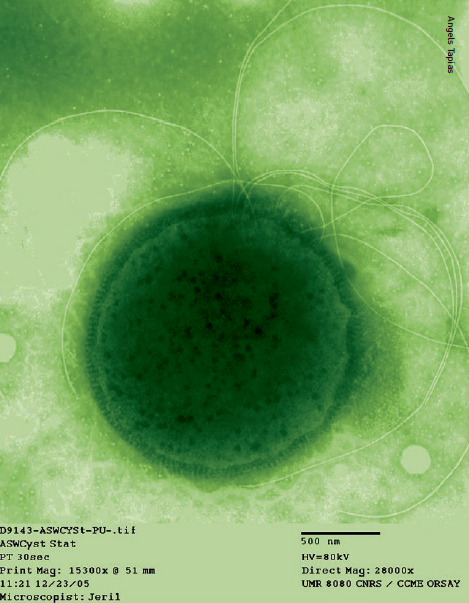 Microphotograph of the Archea Thermococcus Gammatolerans.
Microphotograph of the Archea Thermococcus Gammatolerans.
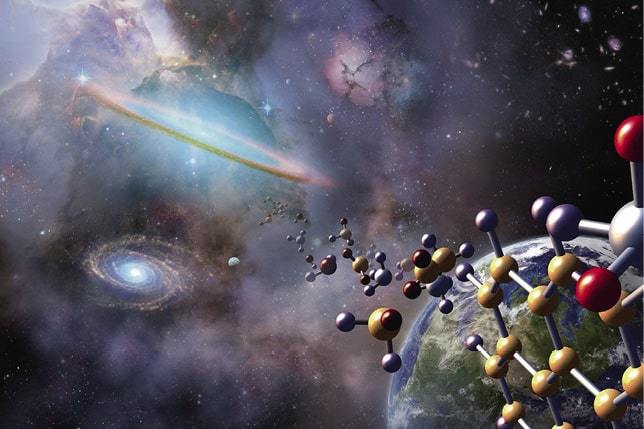 Directed panspermia – seeding the Universe with life through the deliberate provision of organisms in space into lifeless but inhabitable astronomical bodies.
Directed panspermia – seeding the Universe with life through the deliberate provision of organisms in space into lifeless but inhabitable astronomical bodies.
The existence of extremophiles poses some tantalising questions. First, as shown in the table, why should tardigrades be able to survive an impact at speeds of nearly 1 km/s? Although the shock pressure generated by an impact at this speed is likely to be below that for the impact of a body on the Moon or Mars, it remains a possibility that fractions of, for example, impact ejecta, are delivered to other objects at speeds low enough to permit tardigrade survival. Secondly, why should bacteria be able to grow under such high gravitational fields? In 2011 Japanese researchers showed that the growth of the bacterium Paracoccus denitrificans was uninterrupted by conditions of 403, 627 x g, a force only limited by an inability to generate a higher force with the equipment used! It is worth noting that this level of g force is only found in cosmic environments such as on massive stars or in the shock waves of supernova explosions.
Deinococcus radiodurans protects itself from radiation in a different way. In 2016 a Chinese team of scientists showed that a protein which promotes DNA repair called Pprl was present. Pprl stimulates other genes to rapidly repair γ-radiation induced damage to DNA by preventing oxidative damage to repair proteins via manganese ions. As with Dsup, radio-protective effects appear transferable as the PprI gene significantly increases DNA-repair capacity and survival of γ-irradiated human and mouse cells and decreases markers of cell damage and death.
New medical discoveries
One day it may be possible to protect workers from radiation in nuclear facilities, astronauts from the effects of cosmic radiation on long voyages or possibly help human colonies grow crops in extreme environments, such as the Moon or Mars
The underlying biochemistry that supports adaptation and survival of organisms to extreme environments provides us with a unique insight into the limits of cell biology and resets the boundaries of macromolecular stability and biochemical pathways. Organisms which provide anti-microbial substances reside in habitats where the molecules they produce often confer a permissive advantage for host survival by crowding out competitors vying for limited resources. Several pharmaceutical leads have been discovered from studying extremophiles, for example, anti-tumour agents and antibiotics and these natural products may have promise for the treatment of human disease. One example is that of salinosporamide A (SA), isolated in 2003 from the halophilic bacterium Salinispora tropica found in ocean sediment. SA contains a structure known as a ‘warhead’ found in the drug Omuralide, which was the first drug used in cancer treatment as a specific inhibitor of the proteasome, a complex which regulates the balance between cell death and proliferation which is often imbalanced in many cancers. SA entered human clinical trials in 2006 for the treatment of multiple myeloma and is continuing to show promise in further clinical trials under the trade name Marizomib.
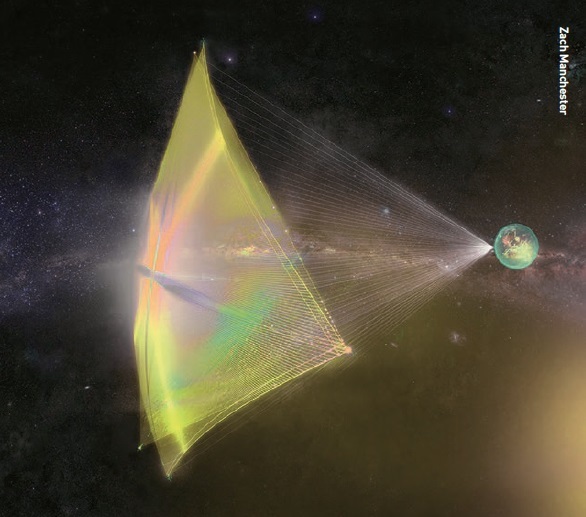 Sending a ‘genesis ark’ of extremophiles to Alpha Centauri on board ultra-light nanocrafts travelling at 20 percent of the speed of light could be a possibility using Project Starshot, an initiative sponsored by the Breakthrough Foundation to explore interstellar space.
Sending a ‘genesis ark’ of extremophiles to Alpha Centauri on board ultra-light nanocrafts travelling at 20 percent of the speed of light could be a possibility using Project Starshot, an initiative sponsored by the Breakthrough Foundation to explore interstellar space.
Applications in synthetic biology
Excitingly, scientists found that both the Dsup protein from R. varieornatus and the Pprl protein from D. radiodurans could transfer radio-resistance to human cells. Dsup reduced DNA damage by approximately 40 percent and Pprl reduced mortality in irradiated mice. These extraordinary findings suggest that one day it may be possible to protect workers from radiation in nuclear facilities, astronauts from the effects of cosmic radiation on long voyages or possibly help human colonies grow crops in extreme environments, such as the Moon or Mars.
In addition to these futuristic possibilities, there are some nearer-term applications in the field of synthetic biology where properties of extremophiles are designed into microorganism biochemistry which may work as ‘micro-factories’. Examples include the biorefinery industry where many of the steps involved in the production of biofuel include high temperatures and extremes of acidity and alkalinity. Bacteria such as Thermoanaerobacterium saccharolyticum are used in the process to produce ethanol. Biomining uses microorganisms to remove insoluble metal sulphides and oxides and acidophilic strains such as Acidthiobacillus and Ferroplasma have contributed to global production of metals such as gold, silver, zinc, nickel and copper.
Metals and radionuclides can be adsorbed onto the cell surface using metalophilic bacteria and the acidophile Cupriavidus metallidurans and a strain of the cryophile Pseudoalteromonas bacterium. Finally, the preparation of food stuffs such as lactose-free milk from cryophiles such as strains from the Arthobacter species where the use of cold-active lactase reduces energy consumption and the risk of pathogen contamination through a heating process. Nature indeed has provided us with a rich tool box.
 The chemical structure of salinosporamide A (SA), which was isolated in 2003 from the halophilic bacterium Salinispora tropica found in ocean sediment. SA entered human clinical trials in 2006 for the treatment of multiple myeloma and is continuing to show promise in further clinical trials under the trade name Marizomib.
The chemical structure of salinosporamide A (SA), which was isolated in 2003 from the halophilic bacterium Salinispora tropica found in ocean sediment. SA entered human clinical trials in 2006 for the treatment of multiple myeloma and is continuing to show promise in further clinical trials under the trade name Marizomib.
Poly-extremophiles and life on Mars?
Extremophiles as life sources from beyond Earth may have contributed to our biological diversity by panspermia
The existence of organisms which can withstand multi-parameter extreme environments poses a tantalising question for which the answer may be within reach. Could these organisms already exist on other worlds and be waiting for our discovery? The recent deployment of the Perseverance and Zhurong rovers as a part of the Mars20 and Tianwen-1 missions respectively, will take samples of Martian regolith and explore surface geology. Perseverance will look for signs of extant or present life; is it conceivable extremophiles may have existed or even exist today? In August 2021, a group led by Charles Cockell at the University of Edinburgh provided evidence showing that perchlorate salts, which are widely found in Martian regolith and are toxic to the growth of plants, under conditions of low temperature increase the activity of the enzyme α-chymotrypsin. This may suggest that cryophiles may have adapted their biochemistry to both temperature and salt conditions furthering the notion that adaptation to Martian conditions may be permissible for some forms of life.
Taken together, we conject that extremophiles as life sources from beyond Earth may have contributed to our biological diversity by panspermia and have followed a parallel evolutionary path uniquely positioned to adapt to niche environments on Earth. Moreover, their highly specialised adaptation has led to the discovery of properties which are beneficial to humankind. In this manner, extremophiles may be considered as a blueprint for universal life.
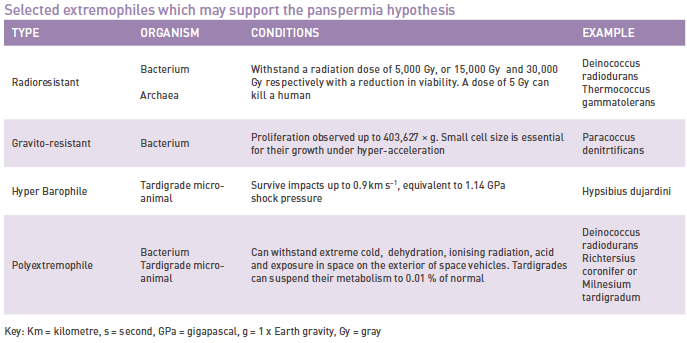
About the authors
Mykhailo Yatsiuta, originally from Ukraine, is studying physics, chemistry, biology and engineering at Thurso High School in Scotland. He is a full-time member of Caithness Astronomy Group and is an active participant in outreach activities for the local community. He forms part of the next generation of young scientists passionate about astronomy and aspires to a career in astrophysics.
Martin Braddock is a scientist and project leader in the UK. He has published over 190 articles in many journals including Nature, Cell, Human Gene Therapy and Nature Drug Discovery and more recently, papers in astronomical journals where astronomy forms a passionate part of his life. He is a member of Sherwood Observatory, a Fellow of the Royal Astronomical Society (RAS) and a Fellow of the Royal Society of Biology. Martin is dedicated to inspiring young people to enter science, is an Advisory Council member at Filling Space and a STEM ambassador in the UK. He has given over 100 lectures to Astronomy Societies and student groups across the globe and in 2021 was nominated for the RAS Annie Maunder Outreach Medal.





